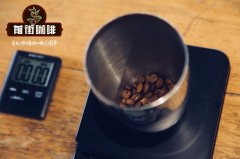Colombia coffee taste introduction

For professional baristas, please follow the coffee workshop (Wechat official account cafe_style)
Espresso: espresso (Espresso) is a type of coffee with a strong taste by brewing coffee with hot water at 92 degrees Celsius and 9bar under high pressure to grind it into a very fine coffee powder. It was invented and developed in Italy and began in the early 20th century, but until the mid-1940s, it was a drink made separately through vapor pressure. After the invention and successful commercialization of the Spring Lever (spring piston lever) coffee machine, espresso was transformed into a drink known today.
In terms of quality, espresso has a thicker texture than drip coffee and contains more dissolved matter per unit volume than drip coffee; supply is usually measured in shot. Espresso is chemically complex and changeable, many of which decompose due to oxidation or a drop in temperature. The proper brewing of espresso is characterized by the presence of coffee fat (Crema), a reddish-brown foam that floats on the surface of espresso. It consists of vegetable oils, proteins and sugars. Coffee fat has the combination of emulsion and foam colloid.
Through the short-time and high-pressure brewing process, the unique flavor of a cup of coffee is stronger than other brewing equipment after being concentrated. However, there is less caffeine because of the short quenching time. Espresso is often used as the basis for coffee drinks mixed with other ingredients (such as milk or cocoa), such as lattes, cappuccinos, macchiato and mocha, without over-diluting the coffee.
Colombian coffee flavor: Colombian coffee has a silky taste. Colombian coffee is equated with high quality and good taste. It is sweet in acid, low in bitterness, rich in nutrition, with a unique sour and mellow taste, and the sour, bitter and sweet flavors of Colombian super coffee match well. Unique fragrance, after drinking, the aroma fills the whole mouth. Exhale the aroma from the mouth again from the nose, the smell is very full.
Important Notice :
前街咖啡 FrontStreet Coffee has moved to new addredd:
FrontStreet Coffee Address: 315,Donghua East Road,GuangZhou
Tel:020 38364473
- Prev

Rose summer red label green label blue label distinguish rose summer coffee introduction
Coffee Workshop (Weixin Official Accounts cafe_style): The species of Geisha was discovered in 1931 from the Guisha Forest in Ethiopia and sent to the Coffee Research Institute in Kenya; introduced to Uganda and Tanzania in 1936, Costa Rica in 1953, Panama in the 1970s by the Fran of Domba Seven Farm
- Next

What's the quality of Arabica and Robusta? are Yega Chevy red cherries good?
Professional baristas Communication Please follow the coffee workshop (Wechat official account cafe_style) many people drink coffee but do not know how coffee is produced, often hear Arabica, wash, but do not know what it means. According to experts, in the current species classification, there are about 60 species of coffee, but the main ones with economic scale and value are Coff.
Related
- Beginners will see the "Coffee pull flower" guide!
- What is the difference between ice blog purified milk and ordinary milk coffee?
- Why is the Philippines the largest producer of crops in Liberia?
- For coffee extraction, should the fine powder be retained?
- How does extracted espresso fill pressed powder? How much strength does it take to press the powder?
- How to make jasmine cold extract coffee? Is the jasmine + latte good?
- Will this little toy really make the coffee taste better? How does Lily Drip affect coffee extraction?
- Will the action of slapping the filter cup also affect coffee extraction?
- What's the difference between powder-to-water ratio and powder-to-liquid ratio?
- What is the Ethiopian local species? What does it have to do with Heirloom native species?

